


























Welcome to the County of Santa Barbara Public Safety Realignment Plan Addendum!
The Public Safety Realignment Act (Assembly Bill 109) was passed on October 1, 2011, with the objectives of addressing overcrowding in California’s prisons and helping alleviate the State’s financial crisis. Additionally, this Act expanded the role of the Santa Barbara Community Corrections Partnership (CCP), which was established as part of the California Community Corrections Performance Incentives Act of 2009 (Senate Bill 678), and created the seven (7) member Executive Committee. The Act transferred the responsibility for specific inmates and parolees from the California Department of Corrections and Rehabilitation (CDCR) to counties. With the shift of the responsibility to the Counties and local communities, it was imperative that the CCP create and maintain specific goals and objectives to best serve this population.
The five (5) CCP goals are outlined within this Realignment Plan and remain the focus of the CCPs efforts, guiding the ongoing funding allocations. The CCP remains committed to using evidence-based and promising practices to carry out the CCP goals, with a balanced approach to allocated programs, services, and staffing. To ensure the CCP funded programs meet the CCP goals and the local population is served, participating departments are required to provide annual presentations that include a review of the overall objectives, previous year’s performance with supporting data, a detailed recommended budget, and any proposed reductions or expansions. As noted in the previous year’s plan, the CCP emphasized the need for even more robust data elements and performance measure review to ensure the ongoing programs and expansions were realizing the intended outcomes. To structure the presentations this year to ensure similar data elements were captured and reported by each department, a formalized template was created, approved by the CCP, and distributed. The presentations provided an opportunity for discussion from collaborative agencies, community members, and other stakeholders to review how programs and operations support the Realignment Plan goals and objectives. The membership continued to meet at a designated frequency in person, however, a virtual component was continued as in the previous year to provide a more convenient platform for the community to participate and engage in discussions.
Since 2011, the County of Santa Barbara Probation Department has compiled and circulated a comprehensive plan, following months of preparation and discussion with the members of the CCP, stakeholders, and members of the community. The developed plan is presented to the Executive Committee and General Membership of the CCP and voted on for approval prior to submission and presentation to the Board of Supervisors. As required by statute, the annual plan and recommended programs are consistent with local needs and resources as applied to the Realigned population. As the Realignment Plan does not change drastically from year to year as most objectives related to the goals set forth by the CCP are reevaluated after they have only been in place for a few months, in August of 2022 the CCP adopted a two-year cycle for preparation of a full Realignment Plan. Last year, a full Realignment Plan was completed; therefore, this year’s plan will only include narrative addendums for innovations or new programs, updated statistics, demographics, goals, and objectives, and outline any substantive program and budget changes.

Over the past year, the CCP has continued to review new program proposals, recidivism data, programmatic updates, new legislation, grant opportunities, pilot programs, and current trends in the justice system. Looking forward, the CCP continues to support the concepts of justice reinvestment and values the collaborative efforts between Departments and community-based organizations (CBO). This plan addendum represents the approach of the CCP to public safety in the County of Santa Barbara. Similar to the previous year, an emphasis remains on evaluating and expanding diversion options, improving and streamlining reentry coordination, providing effective treatment interventions, and ensuring victims are supported. Some of this emphasis is being supported and guided by new legislation (Proposition36) and state initiatives (California Advancing and Innovating Medi-Cal (CalAIM)).
CalAIM will ensure eligible clients are connected to medical coverage or care when leaving correctional facilities by identifying and addressing individual health and social needs through cross-sector collaboration and coordination of pre-release planning. These efforts will improve quality outcomes, reduce health disparities, and provide both ‘in-reach’ services and ‘bridging’ services to health linkages once post-release. CalAIM initiatives and Medi-Cal managed care plans will provide opportunities to fund Enhanced Care Management (ECM), as well as existing and new “Community Support” benefits, such as housing, sobering centers, behavioral health needs, Medication Assisted Treatment (MAT) and other community-based supports, which will undoubtedly impact the services and programs funded through the CCP in future years.
Proposition 36 modified existing law and added substantive charges and enhancements to areas of the Penal Code and Health and Safety Code regarding theft, property damage, and drug-related crimes. The changes include: (1) the creation of new felony theft and drug crimes targeting recidivist offenders; (2) removal of eligibility for the sentences of certain offenses to be served in county jail pursuant to Penal Code section 1170(h); and (3) alignment of the punishment for crimes involving fentanyl with that of other similar controlled substances. Under Proposition 36, Health and Safety Code section 11395 was created as a recidivist felony offense for possession of a “hard drug” and having two or more prior felony or misdemeanor convictions for specified drug-related crimes. This new section provides an option for treatment in lieu of incarceration for the offenses, which allows a client to choose treatment instead of county jail, state prison, or a grant of probation with county jail as a condition of probation. As no funding was provided to local jurisdictions, the CCP has bolstered existing resources within the collaborative Courts to address the additional clients and those efforts are highlighted within this addendum.
The CCP submits the following addendum to highlight the changes that have been made for the coming year with the focus on addressing the needs of the justice-involved individuals, reducing recidivism and having a positive impact on those served.

THE FY 2025-2026 REALIGNMENT PLAN ADDENDUM MAY ALSO BE VIEWED ONLINE AT: https://www.countyofsb.org/389/Probation

Each year, the CCP develops a plan for the Public Safety Realignment Act (Assembly Bill 109) and the Executive Committee of the Community Corrections Partnership (ECCCP) votes to approve the annual spending plan submission to the BOS. As required by statute, the annual plan and recommended programs are to be consistent with local needs and resources as applied to the Realigned population.
▪ HollyBenton(Chair),Chief Probation Officer
Probation Department
▪ BillBrown,Sheriff/Coroner
Santa Barbara Sheriff’s Office
▪ DanielCohen, Santa Maria Police Interim Chief Santa Maria Police Department
▪ TracyMacuga,Public Defender Office of the Public Defender
▪ ToniNavarro,Director Department ofBehavioralWellness
▪ DarrelParker,Court Executive Officer
Superior Court
▪ JohnSavrnoch,District Attorney Office of the District Attorney
▪ Sylvia Barnard,Executive Director Good Samaritan Shelter
▪ Laura Capps,2st District Supervisor County Board of Supervisors
▪ Michael Heck,Chief Executive Officer & President Hamic-Recampus
▪ DanielNielson,Director Department ofSocial Services
▪ SusanSalcido,Ed.D., Superintendent County Education Office
▪ LuisServin,Executive Director Workforce Development Board
▪ Michael Cash,Guadalupe Police Chief Guadalupe Police Department
▪ SpencerCross(Chair),Deputy Chief Probation Officer
Probation Department
▪ KellyDuncan,Assistant District Attorney Office of District Attorney
▪ EleanorGartner,2nd DistrictRepresentative County Board of Supervisors
▪ TanjaHeitman,Asst.County Executive Officer County Executive Office
▪ TracyMacuga,Public Defender Office of the Public Defender
▪ ToniNavarro,Director Department ofBehavioralWellness
▪ DarrelParker,Court Executive Officer
Superior Court
▪ LuisServin,Executive Director Workforce Development Board
▪ Vincent Wasilewski,Chief Custody Deputy Santa Barbara Sheriff’s Office
1 Listed membership reflects individuals of the CCP Workgroup when the Addendum was developed

The implementation of Public Safety Realignment created two (2) additional populations supervised by the Probation Department:
▪ POST RELEASE COMMUNITY SUPERVISION (PRCS) are individuals released from prison to local supervision after serving a felony commitment for a non-violent, non-serious, and non-highrisk sex offense.
▪ MANDATORY SUPERVISION, also referred to locally as Post Sentence Supervision (PSS). These are individuals sentenced pursuant to §1170(h)(5)(B) PC who qualify to serve their prison sentences locally in the County jail after being convicted of a non-serious, non-violent offense. Additionally, these individuals are not registered sex offenders and do not have a prior “strike” (serious and/or violent felony). The law allows for two (2) types of sentences; a straight commitment to County jail pursuant to §1170(h)(5)(A) PC or a split sentence §1170(h)(5)(B) PC which includes a period of time in jail followed by a period on mandatory supervision by Probation
In FY 2023-2024, the County of Santa Barbara Probation Department supervised an average of 425 Realigned individuals each month. Over the course of the fiscal year, 667 unique individuals were supervised on Post Release Community Supervision (PRCS) or Post Sentence Supervision (PSS). The number of individuals beginning realigned supervision-either PRCS or PSS-increased from 246 in FY 2023 to 270 in FY 2024 (Figure 1). The characteristics of these individuals, including race/ethnicity, gender and age are illustrated in Figure 2.
Although Realigned clients comprise a smaller proportion of the total population supervised by the Probation Department-approximately 13%-they represent a higher-risk group overall. Among Realigned clients, 88% of those on PRCS and 73% of those on PSS were assessed as high risk to reoffend or reoffend violently, compared to 25% for standard probationers (Figure 3).

During FY 2023-2024, a total of 667 unique individuals were supervised on either PRCS or PSS supervision
Snapshot on January 1, 2025



Although Realigned clients comprise a smaller proportion of the total population supervised by the Probation Department-approximately 13%-they represent a higher-risk group overall.


Clients supervised under Public Safety Realignment represent approximately 13% of the overall supervised population in the county.
Snapshot on January 1, 2025

During FY 2023-2024, 1602 individuals completed PRCS supervision and 603 individuals completed PSS supervision (Figure 4). The majority of those individuals-approximately 60%-completed supervision successfully4, as determined by departmental criteria at the conclusion of the client’s supervision term.
In FY 2023-2024 a total of 160 unique individuals completed PRCS supervision and 60 unique individuals completed PSS supervision
(n=160 unique individuals exited PRCS supervision in FY 2023-2024)
(n=60 unique individuals exited PSS supervision in FY 2023-2024)
While the success of individuals completing supervision offers valuable insight into client progress during their term of supervision, recidivism is a key outcome measure for practitioners to evaluate the extent to which programs and services are changing behavior over time.
AB1050 required the Board of State and Community Corrections to draft and approve a statewide definition of recidivism. The approved statewide definition of recidivism is a new felony or misdemeanor conviction three (3) years from the start of supervision or release from custody5. This is an important indicator because it allows practitioners to examine the rates in which clients are reoffending in comparable time frames, providing an “apples-to-apples” comparison of recidivism across all Realigned populations, whether or not they receive supervision.
Displayed in Figures 5 and 6 are data for ten (10) years of PRCS and PSS clients who started supervision in 2011 through 20206. For example, of the PRCS clients who started supervision in 2020, 39.4% recidivated within three (3) years through 2023. The clients’ highest recidivating event during the three years (either misdemeanor or felony) is also provided for each population.
2 Unique/unduplicated count of individuals
3 Ibid.
4 Clients are exited from supervision successfully if the case is in good standing; after 12 consecutive months having served no custodial time (PRCS clients only) or the client met their three-year expiration date (PRCS clients only).
5 As defined by the Board of State and Community Corrections (BSCC) https://www.bscc.ca.gov/s_recidivism/
6 Individuals who began supervision as both a PRCS and PSS in the reporting year were categorized as PRCS

6
Due to the small sample size of individuals starting PSS supervision in any reporting year compared to individuals starting PRCS, the recidivism percentage may appear more pronounced. The larger swing from year-to-year in PSS recidivism rates are likely a reflection of the smaller group being tracked. For example, in 2020, there were 36 individuals that started PSS compared to 211 PRCS clients.

California Advancing and Innovating Medi-Cal (CalAIM) is a comprehensive, multi-year plan to transform Medi-Cal throughout the state, which will improve the quality of care and health outcomes for beneficiaries. This Department of Health Care Services (DHCS) initiative is designed to enhance the integration of care, particularly for justice-involved individuals with complex health needs, through a whole-person care approach. The deadline for full implementation is October of 2026; however, work is being done to implement the changes in phases. While ongoing planning continues, the CCP and County Departments are evaluating programs and funding sources for efficient and costeffective services.

The various departments within the County of Santa Barbara are actively engaged in collaboration with local healthcare providers, managed care organizations, and community partners to tailor the components of the plan to match the county's specific needs within the CalAIM guidelines. The early efforts have focused on building strong networks to support Enhanced Care Management (ECM), with an emphasis within the criminal justice system to address homelessness, behavioral health needs, and chronic disease management. For a successful implementation, efforts have emphasized flexibility and innovation while implementing various components of the initiative. This collaboration requires involvement from representatives from the county’s managed care plan (Cen-Cal), community-based organizations, and other stakeholders. This has involved developing new partnerships, enhancing datasharing capabilities to improve care coordination and outcome tracking and increasing workforce capacity to meet the requirements of the initiative. The local CalAIM implementation includes several key phases:
➢ INITIAL PLANNING AND DESIGN: Stakeholders have begun to implement local strategies; focusing on Medi-Cal enrollment so that clients receive health assessments and targeted medical and behavioral health services in the 90 days before their release from incarceration. Planning meetings have involved Behavioral Wellness, Sheriff’s Office, Probation Department and Public Health. A new Reentry Plan Summary was created with input from all partners to meet the CalAIM requirements and provide a roadmap for client success.
➢ CAPACITY BUILDING: A contract was executed with Serrano Advisors to serve as a consultant to assist with the development and planning of the infrastructure and workforce needed to support the new services, while also providing guidance with workflows and ensuring all CalAIM elements are met. The State Department of Health Care Services has additional resources and trainings available to assist with the CalAIM implementation.

CalAIM’s Justice-Involved Reentry Initiative allows eligible Californians who are incarcerated to enroll in Medi-Cal and receive a targeted set of services in the 90 days before their release. This initiative aims to ensure continuity of health care coverage and services between the time they are incarcerated and when they are released. For more information click here: https://www.dhcs.ca.gov/CalAIM/Justice-Involved-Initiative/Pages/home.aspx

The Freedom to Choose (FTC) project is a non-profit program focused on transforming the lives of incarcerated individuals through compassionate, experiential education, and reducing violence and disciplinary conduct within the institutions. FTC is designed to be evidence-based and culturally responsive, featuring a bilingual curriculum in Spanish. It utilizes cognitive-behavioral approaches, emotional intelligence development, resilience building, and techniques aimed at trauma and violence reduction, among other effective psychological strategies. Participants will acquire practical skills in empathetic communication, emotional competency, and self-responsibility.
Previously available through a self-directed correspondence model, the program will be transitioned to an in-person format, which will provide a more in-depth experience for clients in the jail environment. While correspondence-based programs have proven effective within the prison system, the in-person approach offers a more immersive and engaging experience that aligns with the needs of individuals in jail, improving participation and graduation rates. The in-person program will be accessible to all genders.
The curriculum of the FTC, Pathways to Freedom, is structured around modules that promote "Change from the Inside." The focus is on teaching skills necessary for healing trauma, enhancing emotional intelligence, and fostering empathy and resilience, applicable in any setting. The daily application of learning through these modules helps build competencies such as problem-solving, self-regulation, communication, inner peace cultivation, and self-reflection. The ultimate goal of the program is to equip participants with the insight and awareness needed for sustainable, prosocial change, supporting their successful reentry into the community.
In line with the goals of the Community Corrections Partnership (CCP), this program seeks to foster positive behavioral change in justice-involved individuals, equipping them for successful reintegration into the community. In order to evaluate the efficacy of the program, data will be collected on FTC participants related to recidivism rates and risk level, disaggregated by age, race/ethnicity, and gender. The CCP has approved one-time funding in the amount of $44,000 for an additional year.


The County of Santa Barbara District Attorney’s Office (DA), in partnership with the Second District Supervisor’s Office, launched a Neighborhood Restorative Justice Program (NRJP) pilot in 2021, which was previously referred to as Neighborhood Court. NRJP is a restorative justice-based pre-filing diversion program designed for certain misdemeanor offenses. The benefits of the NRJP include diverting lowlevel offenses through a restorative justice process that emphasizes accountability, enhancing community involvement in promoting public safety, and reducing the time and resources spent on adjudicating low-level offenses in court.
The framework of the NRJP pilot facilitated the expansion of the program to the northern part of the County, starting in July 2023. Between July 1, 2024, and December 31, 2024, the DA referred cases for 285 individuals to the NRJP instead of pursuing criminal charges.
In the NRJP, individuals who commit qualifying offenses meet with a panel of trained community volunteers to discuss the offense, its impact on the community, and the steps they can take to make amends and prevent future offenses. After meeting with the NRJP volunteers, participants complete agreed-upon accountability actions, which may include community service, writing letters of apology, participating in educational opportunities, or attending counseling sessions. Successful completion of these accountability actions results in charges not being filed. Of individuals enrolled in the NRJP who exited the program, 176 of 214 (82%) successfully7 completed in FY 2023-2024.
During FY 2024-2025, the DA's Office received ongoing support from the CCP in the allocation of onetime funding for the continued expansion of the NRJP countywide. This expansion enabled the DA’s Office to contract with Fighting Back Santa Maria Valley (FBSMV) for facilitator training, media campaigns, and outreach, and also contract with the University of California, Santa Barbara, as an independent evaluator of the program.
The NRJP employs a victim-centered approach, addressing the needs of victims (including the community) and fostering stronger connections between individuals, which may help reduce recidivism and improve satisfaction with the justice system for both participants and victims. To increase victim participation and engagement in the NRJP for FY 2025-2026, the CCP allocated additional one-time funding for the DA’s Office to hire a full-time Extra-Help Victim Witness Advocate. This advocate will play a crucial role in strengthening the connection between victims and the NRJP, providing personalized support and resources to ensure that victims feel empowered and engaged in the restorative justice process. The addition of a full-time Extra-Help Victim Advocate further demonstrates the ongoing commitment to fostering a more inclusive and supportive environment that enhances participation and overall effectiveness within these communities. In order to bolster the growth and enhance the success of the NRJP, an independent evaluator with University of California, Santa Barbara utilizes key metrics to research and evaluate the impact of the Countywide NRJP. To understand how well the program is implemented, success in program engagement among participants and victims, as well as completion of assigned programs and activities as part of the restorative justice intervention are tracked. The CCP has approved one-time funding in the amount $190,200 for FY 2025-2026 through FY 2026-2027.
7 Successful completion of the NRJP is defined as completing all element on the NRJP agreement, to include paying restitution, attending recommended courses, authoring an apology letter, etc.

The County of Santa Barbara offers a variety of Collaborative Courts within the Superior Court system to address qualified cases in a team environment with specialized staff dedicated to the court calendar. Investing in Collaborative Courts is specifically authorized under §1230(d) PC as a justice reinvestment strategy, which states that evidence-based rehabilitation programs including, but not limited to, drug and alcohol treatment, mental health treatment, anger management, and cognitive behavioral programs help maximize the effectiveness of criminal justice resources. The individuals assigned to these courts are often charged with Realignment-eligible offenses and benefit from the positive, therapeutic alternatives to jail provided to help end the cycle of recidivism.
In FY 2024-2025, realignment funds were allocated to fund a 1.0 FTE Deputy District Attorney and 1.0 FTE Deputy Public Defender to staff the Collaborative Courts. The Collaborative Courts also serve additional populations that require legal representation such as individuals participating in nonprobation-supervised Military Diversion and Mental Health Diversion under Penal Code sections 1001.80 and 1001.36.
With the recent passage of Proposition 36 (2024) - the Homelessness, Drug Addiction, and Theft Reduction Act, the DA’s office will have the discretion to charge certain offenses as felonies, one of which relates to hard drug possession with multiple prior drug convictions. If charged with this “treatment-mandated felony” under Health and Safety Code (HSC) 11395, clients will have the option of participating in Substance Use Disorder (SUD) and/or Mental Health (MH) treatment as an HSC 11395 Deferred Entry of Judgment (DEJ) grant and the cases will be heard in the Collaborative Courts.
If an individual charged with HSC 11395 elects mandated treatment, the Court shall order a drug addiction expert to conduct a substance use and mental health evaluation of the defendant and also order that a qualified individual determine whether the defendant is eligible to receive Medi-Cal, Medicare, or other relevant benefits. The evaluations will be used to complete a court report detailing the recommended treatment program(s). The Behavioral Wellness Department (BWell) has been identified as the drug addiction experts to conduct the aforementioned evaluations.
As with the current collaboration within the Superior Court for existing Collaborative Courts, Proposition 36 (2024) will require participation from the DA, PD, BWell and the Probation Department in order to be successful in the Collaborative Court expansion. To address the needs of Proposition 36 (2024), the following staff were added: two Deputy Public Defender III, two Deputy District Attorney III, two Collaborative Court Deputy Probation Officers, one BWell Practitioner, a half-time BWell Alcohol and Drug Service Specialist, and a half-time BWell Administrative Office Professional. Together, these staff will provide services that includes, but is not limited to, completing Court ordered evaluations, providing case management, offering collaborative court legal representation, ensuring legislative compliance, attending court hearings, assisting with managing acute and criminogenic needs, reviewing MediCal/Medicare eligibility, and providing supports to improve client success and recovery by making connections to community-based services.

In order to evaluate the efficacy of this expansion, the agencies agreed to collect data on recidivism, successful HSC 11395 DEJ completion, average days to jail release upon being placed on HSC 11395 DEJ, and the percentage of HSC 11395 DEJ Medi-Cal eligible defendants whose coverage was activated within 60 days of evaluation, disaggregated by age, race/ethnicity, and gender. The CCP has approved one-time funding in the total amount of $2,392,400 over a two-year period for Proposition 36 efforts.
The County of Santa Barbara Sheriff's Office partners with GRID Alternatives, a nonprofit organization focused on solar installation, to provide job training in photovoltaic installation to inmates at the North Branch Jail in Santa Maria. GRID Alternatives offers practical training that helps participants develop skills for entry-level solar installation, including construction and electrical knowledge, understanding the National Electric Code, and adhering to OSHA safety standards.

The program includes a 60-hour introductory course over five weeks, featuring in-person classes with presentations, hands-on use of tools, and a mock roof for practical experience. Participants complete assessments on job site protocols and safety, and they must demonstrate their installation skills before finishing the program.
Over the course of a year, the objective is for four (4) cohorts of ten (10) participants each to be trained, totaling forty (40) individuals. Those who pass the OSHA-10 Training will receive a lifetime safety certification, enhancing their job prospects. The program also assists participants with job resumes, necessary documentation, and DMV identification applications.
This program aligns with the objectives of the CCP by equipping participants with skills for entry-level positions, thereby enhancing their chances for successful community reentry and viable employment opportunities. In an effort to enhance program participation and secure full cohorts, admissions criteria have been broadened; additionally, to ensure successful reentry, Care Managers will identify needed post-release resources for graduates and regular follow-up will be conducted. In order to evaluate the efficacy of the program, data will be collected on GRID Alternative graduates related to employment obtention in solar or related trade fields, recidivism rates, and risk level, disaggregated by age, race/ethnicity, and gender. The CCP has approved one-time funding in the amount of $107,400 to operate the program for an additional year.


Public Safety Realignment places significant responsibility and challenges on the local jurisdiction; however, by offering considerable flexibility, it also presents opportunities. The local CCP is committed to mitigating challenges and seizing these opportunities to improve the local criminal justice system. To guide the local efforts and provide focus to the designated resources, the following goals, objectives, and outcomes have been developed. The CCP continues to refine its objectives to ensure services, programs and strategies are aligned with the overarching goals, and that these goals continue to guide the realignment work of partner agencies and community-based organizations working with the realigned and pretrial populations.

8
Reducing recidivism is the primary focus of County of Santa Barbara’s Realignment efforts. Strategies for affecting the drivers of criminal behavior require the use of evidence-based programs delivered to model fidelity. Not only has the CCP endorsed the utilization of programs proven to reduce recidivism, it has leveraged its work with “Results First” to guide resource allocation decisions.
Deliver evidence-based programming that is datadriven and matched to Realigned clients’ risks and needs.
Expand the use of best practices for evidencebased sentencing and adjudication that utilizes Realigned clients’ specific risk, needs, and responsivity measures.
FY 2024-2025
PROJECTED OUTCOME
Effective July 1, 2024, a contract was executed with Community Solutions Inc., for the “Coping with Anger” program, thereby meeting the goal for this objective to contract for no less than one (1) CBT anger management intervention to address client feelings, resulting behaviors and strategies to control.
The first client cohort of the 10-week “Coping with Anger” program began September 2024. As of the publishing of this document, it was too early to assess progress. While the proposed outcome is that no less than 50% of clients discharged successfully will show improvement, progress toward the projected outcome cannot be determined and has been included as a FY 2025-2026 outcome.
County of Santa Barbara Superior Court and Probation records indicate the percentage of Realigned clients with a new felony or misdemeanor conviction three (3) years from the start of supervision or release from custody as:
• 39.4% for Post Release Community Supervision (PRCS) clients. This surpasses the FY 2023-2024 goal of 41.8%.
• 52.7% for Post Sentence Supervision (PSS) clients10. This is an increase from the FY 2023-2024 goal of 40%.
(Refer to page 9 for recidivism trend)
FY 2025-2026 PROPOSED OUTCOME
No less than 50% of clients discharged successfully after completing “Coping with Anger”9,will show improvement between the pre/post on the Texas Christian University (TCU) Criminal Thinking Scales (CTS) measuring client empathy and management of anger.
Percentage of clients with a new felony or misdemeanor conviction 3 years from the start of supervision or release from custody will not exceed 40% for PRCS clients and 50% for PSS clients.
8 Defined as a new felony or misdemeanor conviction 3 years from the start of supervision or release from custody
9 “Coping with Anger” is a cognitive behavioral treatment (CBT) for anger management
10 Due to the small sample size of individuals starting PSS supervision in any reporting year compared to individuals starting PRCS, the recidivism percentage may appear more pronounced. The larger swing from year-to-year in PSS recidivism rates are likely a reflection of the smaller group being tracked. For example, in 2020, there were 36 individuals that started PSS compared to 211 PRCS clients.
Reducing recidivism is the primary focus of County of Santa Barbara’s Realignment efforts. Strategies for affecting the drivers of criminal behavior require the use of evidence-based programs delivered to model fidelity. Not only has the CCP endorsed the utilization of programs proven to reduce recidivism, it has leveraged its work with “Results First” to guide resource allocation decisions.
Support professional training to advance systemwide knowledge of evidence-based practices in the criminal justice field.
FY 2024-2025 PROJECTED OUTCOME
The FY 2024-2025 goal of delivering no less than five (5) targeted trainings to staff delivering community interventions to high utilizers in the Familiar Faces program was met just prior to the start of the fiscal year, exceeding the goal for this objective. Additionally, it is anticipated that by June 30, 2025, LEAP®11 training will be provided to the Familiar Faces Team, further enhancing their capacity to support this population.
FY 2025-2026 PROPOSED OUTCOME
By January 1, 2026, Collaborative Court staff will receive training on treatment court best practices, aligning with the requirements of SB910 and the guidelines developed by All Rise12 to ensure local programs are designed and operated in accordance with state and nationally recognized standards.

11 LEAP® is an evidence-based communication program focused on creating relationships with clients with the goal of helping them accept treatment; outreach and engagement; and care coordination for field-based mental health and outreach providers.
12 All Rise was founded in 1994 as the National Association of Drug Court Professionals and is a 501(c)3 non-profit.
ENHANCE THE USE OF ALTERNATIVE DETENTIONS (PRE- AND POST-SENTENCE) FOR APPROPRIATE JUSTICE-INVOLVED INDIVIDUALS13 .
The CCP is focused on reducing the reliance on incarceration through the utilization of alternative sentencing options for appropriate justice-involved individuals. Research-based assessment instruments are used to assure the safety of the community and reduce unnecessary detention for eligible individuals including those who are awaiting trial and those already sentenced.
Utilize evidencebased assessment tools for pretrial and post-sentence jail release decisions.
Strive to maximize jail capacity for highest-risk clients and identify those who can be safely released.
FY 2024-2025
PROJECTED OUTCOME
It is anticipated that by June 30, 2025, a collaborative review and evaluation of current pretrial override procedures will be completed, aligning local supervision practices with assessed risk level of individuals and meeting the goal for this objective.
As of October 2024, the average daily population of individuals enrolled in alternative sentencing was 66.7, not meeting the FY 20242025 goal of 84. The Santa Barbara County Sheriff’s Office continues to examine eligibility criteria to determine where opportunities exist to allow additional individuals to enroll and be supervised safely in the community without negatively effecting overall community safety and security.
As of December 31, 2024, 64% of inmates held in the jail over two (2) weeks had either an IST or COMPAS completed. While this falls short of the 80% goal for this objective, it represents an improvement from 58% on the same snapshot day last year.
Additionally, of the total housed jail population with either the IST or COMPAS completed, 18% were assessed as low-risk15 to reoffend, not meeting the 9% goal for this objective.
FY 2025-2026
PROPOSED OUTCOME
No less than 70% of individuals on pretrial supervision will be discharged successfully14, maintaining the success rate achieved in FY 20232024 and continuing the upward trend from 67% in FY 2022-2023 and 66% in FY 2021-2022.
Increase total enrollment in the Alternative Sentencing Program by 10% from 374 total individuals in FY 2024-2025, to 411 in FY 2025-2026, to expand access to alternatives to incarceration and supporting jail population.
Reduce the average application response time for individuals applying to the Alternative Sentencing Program from 14 days in FY 2024-25 to less than 12 days, improving access to alternative sentencing.
As determined by the VPRAI-R risk assessment instrument, 80% of individuals recommended to the Court for pre-arraignment release are granted release.
13 Defined as scoring between 1-5 on the risk of general recidivism and risk of violence scale on the COMPAS
14 Defined as individuals who reported to pretrial staff, appeared for scheduled court appearances, and did not have any new offenses during their pretrial monitoring period.
15 Defined as scoring between 1-3 on the IST or between 1-5 on the risk of general recidivism and risk of violence scale on the COMPAS
ENHANCE THE USE OF ALTERNATIVE DETENTIONS (PRE- AND POST-SENTENCE) FOR APPROPRIATE JUSTICE-INVOLVED INDIVIDUALS16 .
The CCP is focused on reducing the reliance on incarceration through the utilization of alternative sentencing options for appropriate justice-involved individuals. Research-based assessment instruments are used to assure the safety of the community and reduce unnecessary detention for eligible individuals including those who are awaiting trial and those already sentenced.
Expand the diversion of individuals from the justice system.
FY 2024-2025 PROJECTED OUTCOME
As of December 31, 2024, 284 individuals were referred to the Neighborhood Restorative Justice Program (NRJP), surpassing the projected goal of 200 referrals by June 30, 2025 for this objective.
For the last fiscal year (July 1, 2023 to June 30, 2024), 36% of referred individuals completed the NRJP. While updated completion data as of December 31, 2024, is not yet available, efforts remain focused on achieving the projected goal of 40%.
Beginning in FY 2025-2026, the measure will track enrolled individuals who exit the NRJP with a status of “successful”17, better reflecting program completion. The NRJP achieved an 82% completion rate in FY 2023-2024. The goal for FY 2025-2026 is to sustain a completion rate of at least 80%.
As of July 1, 2024, a contract with Resource Development Associates (RDA) was executed for a process evaluation to examine diversion options across Santa Barbara County including population served by each, suitability and eligibility criteria, as well as indicators of net-widening, meeting the goal for this objective.
FY 2025-2026 PROPOSED OUTCOME
Maintain a successful NRJP completion rate of at least 80% of all enrolled individuals.
Explore findings from the FY 2024-2025 process evaluation to establish priorities and enhance diversion in the County including the development of data collection frameworks to support a future outcome evaluation.
16 Defined as scoring between 1-5 on the risk of general recidivism and risk of violence scale on the COMPAS
17 Successful completion of the NRJP is defined as completing all elements on the NRJP agreement, to include paying restitution, attending recommended courses, authoring an apology letter, etc.
PROVIDE FOR SUCCESSFUL AND EQUITABLE REENTRY OF JUSTICE-INVOLVED INDIVIDUALS BACK INTO THE COMMUNITY.
The CCP is committed to coordinating and providing services to prepare justice-involved individuals for the successful return to their community after a period of incarceration. Strategies include providing needed rehabilitative services, removing barriers to housing as well as capturing community input on program development and other justice system reform efforts.
Provide services and treatment in partnership with existing community providers.
Facilitate access to sober living and transitional housing, as well as long-term supportive housing.
Promote a shared safety approach in conjunction with community partnerships and engagement.
Between July 1, 2024 and December 31, 2024, 50% of individuals enrolled in employment services (5 out of 10) secured employment, achieving the FY 2024-2025 goal of 50% within the first six-months of the fiscal year.
From July 1, 2024, through December 31, 2024, 73% or 19 of 26 clients exiting supportive housing secured stable housing, exceeding the goal of 58% for this objective.
On July 1, 2024 a contract was executed with Community Solutions, Incorporated (CSI) for the qualitative Valuing Voices study. On August 28, 2024, the draft data collection and recording methods as well as survey, focus group and interview questions were shared with the CCP workgroup for review and feedback and finalized on September 13, 2024.
By June 30, 2026, all individuals released from the behavioral health unit (BHU) and/or those receiving Medicated Assisted Treatment (MAT) at the time of discharge to the community will have a discharge plan completed and Medi-Cal activated.
No less than 70% of clients exiting supportive housing will secure a positive housing destination.18
The CCP workgroup will review draft findings of the Valuing Voices study including major themes, key insights, and actionable implications for practice, along with proposed strategies for implementation.
18 Positive housing is defined as a regular nighttime residence that is not a temporary shelter or other place not designed for sleeping.
PROVIDE FOR SUCCESSFUL AND EQUITABLE REENTRY OF JUSTICE-INVOLVED INDIVIDUALS BACK INTO THE COMMUNITY.
The CCP is committed to coordinating and providing services to prepare justice-involved individuals for the successful return to their community after a period of incarceration. Strategies include providing needed rehabilitative services, removing barriers to housing as well as capturing community input on program development and other justice system reform efforts.
Number of clients evaluated for referral through the Community Defender Division (CDD) to services including shelter, housing, drug treatment, mental health treatment, and vocational services.
FY 2024-2025 PROJECTED OUTCOME
From July 1, 2024, through December 31, 2024, 16% of clients served by the CDD achieved stable housing or consistent employment19, not yet meeting the goal of 50% for this objective.
FY 2025-2026 PROPOSED OUTCOME
No less than 70% of clients referred for community services, will enroll in at least one evidence-based program or essential services with a community organization (shelter, housing, medical services, drug treatment, mental health treatment, primary care, vocational services).
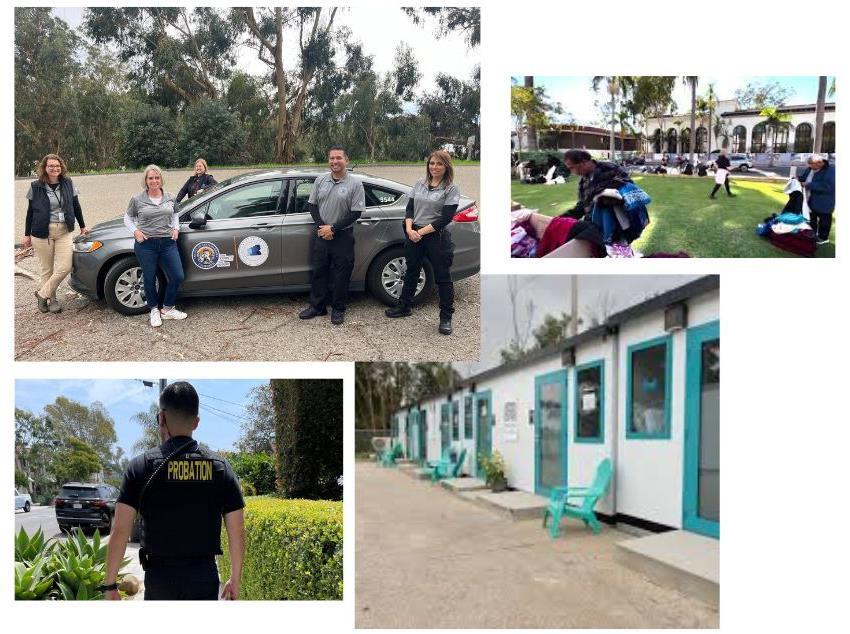
19 Consistent employment defined as uninterrupted work over no less than a period of 3 months.
COORDINATE EFFORTS TO ELIMINATE DUPLICATION, ENHANCE EFFICIENCIES, AND PROMOTE BEST PRACTICES.
Working collaboratively, the CCP is able to address emerging issues to support the Realigned population and promote community safety. These efforts have included data integration across systems, the evaluation of Public Safety Realignment practices and programs, and fidelity reviews of delivered evidence-based programs.
Ensure fidelity to the research-based models for funded programs.
Evaluate adherence to evidence-based strategies.
Collaborate with justice partners for information sharing and coordination of efforts around best practices.
Capture and integrate data necessary to measure outcomes.
FY 2024-2025
PROJECTED OUTCOME
It is projected that by June 30, 2025, no less than 90% of funded evidence-based programs will have completed curriculum specific fidelity reviews, meeting the outcome for this objective.
From July 1, 2024, through December 31, 2024, 72% of clients engaged with the Holistic Re-entry, Early Access, and Diversion (READY) program enrolled in at least one evidence-based program or were linked to a community-based organization, approaching the 80% goal for this objective.
As of January 1, 2025, the discharge planning workflow, including clearly defined roles and responsibilities across involved entities, was initially mapped. The workflow is continually evolving as ongoing updates are incorporated to reflect changes. Additionally, a pilot project delivering enhanced discharge planning services to a subset of Behavioral Health Unit patients was implemented, successfully meeting the goal for this objective.
As of January 1, 2025, the minimum data exchange with BWell to generate the MNI key as outlined in the Santa Barbara County Interagency MOU was successfully executed, enabling evaluation and outcome reporting for the Familiar Faces Team (FFT) initiative, and meeting the goal for this objective.
FY 2025-2026 PROPOSED OUTCOME
To assess quality and monitor program fidelity-how closely a program adheres to its researchbased design-ensure no less than 90% of funded evidence-based programs have completed curriculum specific fidelity reviews.
No less than 80% of clients who engage with the Holistic Reentry, Early Access, and Diversion (READY) program will enroll in at least one evidence-based program with a community-based organization.
Coordinate reentry plans with partner agencies for 100% of individuals released from the County jail after 7 or more days of incarceration by June 30, 2026.
Transition FFT from utilizing SmartSheet to a database system, enhancing data collection, reporting capabilities, and the tracking of client outcomes to support more effective program evaluation and decision-making.
The CCP is committed to understanding the extent to which racial and ethnic disparities exist within the criminal justice system. The partnership maintains its commitment to ensuring all justice-involved individuals are treated with dignity, respect, and humanity. In FY 2023-2024, the partnership will focus on expanding its understanding and impact of racial and ethnic disparities in the justice system and addressing and implementing processes to assist in reducing disproportionality.
Partner with local justice partners to educate staff and stakeholders, and strategize approaches to address any racial and ethnic disparities in the local justice system.
Use county-specific findings on racial and ethnic disparities to inform decisionmaking.
Solicit input from justice involved clients and/or victims on the challenges faced and receive feedback on treatment within the criminal justice system to ensure all are treated with dignity, respect and humanity.
FY 2024-2025
PROJECTED OUTCOME
It is projected that by June 30, 2025 five trainings will be designed and implemented for defense attorneys and/or system partners throughout Santa Barbara County. These trainings include topics such as identifying racial bias, deciphering coded language, best practices for discovery review, and data analysis, achieving the goal for this objective.
On August 8, 2024, the CCP approved the Race Equity Tool worksheet for piloting, meeting the goal for this objective. Additionally, a presentation was delivered to the CCP on its use and implementation. Moving forward, all new program funding proposals will be expected to use the new Racial Equity Tool worksheet.
As of January 1, 2025, Community Solutions, Incorporated (CSI) had initiated data collection to gather information highlighting strengths, services gaps, racial/ethnic disparities, and recommendations by means of interviews, focus groups, and community surveys to justice-involved clients and/or victims, their families, and those who work with them, meeting the goal for this objective.
FY 2025-2026
PROPOSED OUTCOME
Complete a new relative rate index decision point analysis by June 30, 2026, and compare findings to the 2021 analysis to strategize approaches to address racial and ethnic disparity in the local justice system.
Enhance data collection on NRJP victim participation by capturing reasons for non-participation to identify and address barriers.
Over the past year, the County of Santa Barbara County Community Corrections Partnership (CCP) Executive Committee and General Membership continued collaboration and discussion of realignment efforts with county departments, community members, and additional stakeholders. The ongoing discussions led to a further examination of budget expenditures, process improvements, and program expansions to address the needs of clients within the different regions of the community and focus on fiscal prudence.
The FY 2025-2026 Realignment Plan Addendum outlines the CCP’s investment in new strategies and program expansions to increase victim participation in the restorative justice process, enhance programming within the jails, support data collection and evaluation, and address new legislation requirements under Proposition 36. Similar to the previous year, most of these initiatives were funded though one-time allocations from the CCP’s restricted fund balance. This year also marked a significant shift, as the CCP took a comprehensive approach to evaluating how future budgets may impact ongoing programs and services. By integrating data and analysis more intentionally, the CCP identified key initiatives for expansion in the upcoming fiscal year, ensuring that resources are directed toward strategies with the greatest impact.
These expansions build upon the foundation of ongoing programs and services that remain central to the county’s realignment efforts. Together, they support the broader goals of reducing incarceration, expanding diversion opportunities, lowering the jail population, improving reentry coordination, enhancing programming for clients, and assisting victims.
This Realignment Plan Addendum represents the dedication of the justice partners throughout the County of Santa Barbara to implement effective programs, provide needed services, and collect data to inform decision making. The CCP supports innovation, client centered approaches and ongoing improvement of public safety using evidenced-based practices.

The proposed FY 2025-2026 budget of more than $20 million demonstrates alignment with the CCP efforts which focus on jail population management, pretrial services, alternative sentencing, case management, supervision, treatment services and support for Realigned clients.
The budget includes an allocation of $3,132,400 of Programmatic Restricted Fund Balance.
The charts included in the following pages detail:
• FY 2025-2026 Public Safety Realignment Act Budget
• Public Safety Realignment Act (AB109) Restricted Fund Balance
• AB109 Restricted Fund Balance and FY 2025-2026 One-Time Allocations
• Five-Year Use/Source of Funds Trend Summary
• Five-Year Use/Source of Funds Trends Detail
2025-2026
FINANCING
FY 2025-2026 Public Safety Realignment Act Budget
Program Restricted Fund Balance
Planning Restricted Fund Balance
Implementation Restricted Fund Balance
Fiscal






























































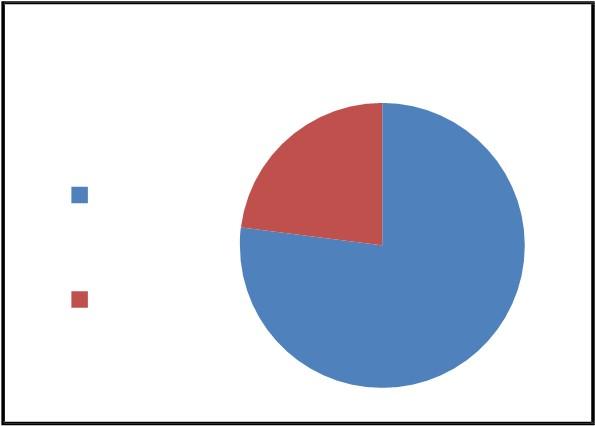




















0 0
*Technical Violations Only TotalPlannedBedDays:3346/Month (110ADA) Bed Days %ofPlanned BedDays




















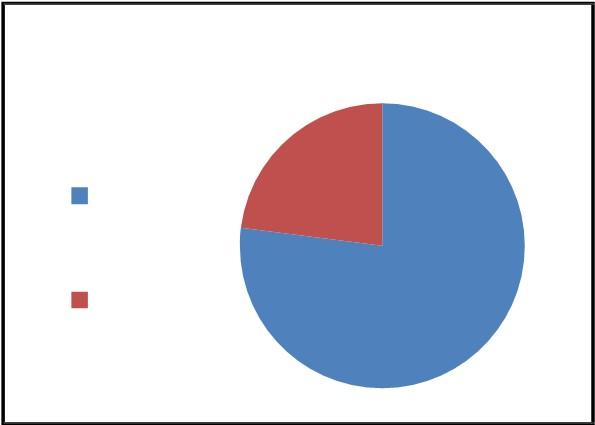
















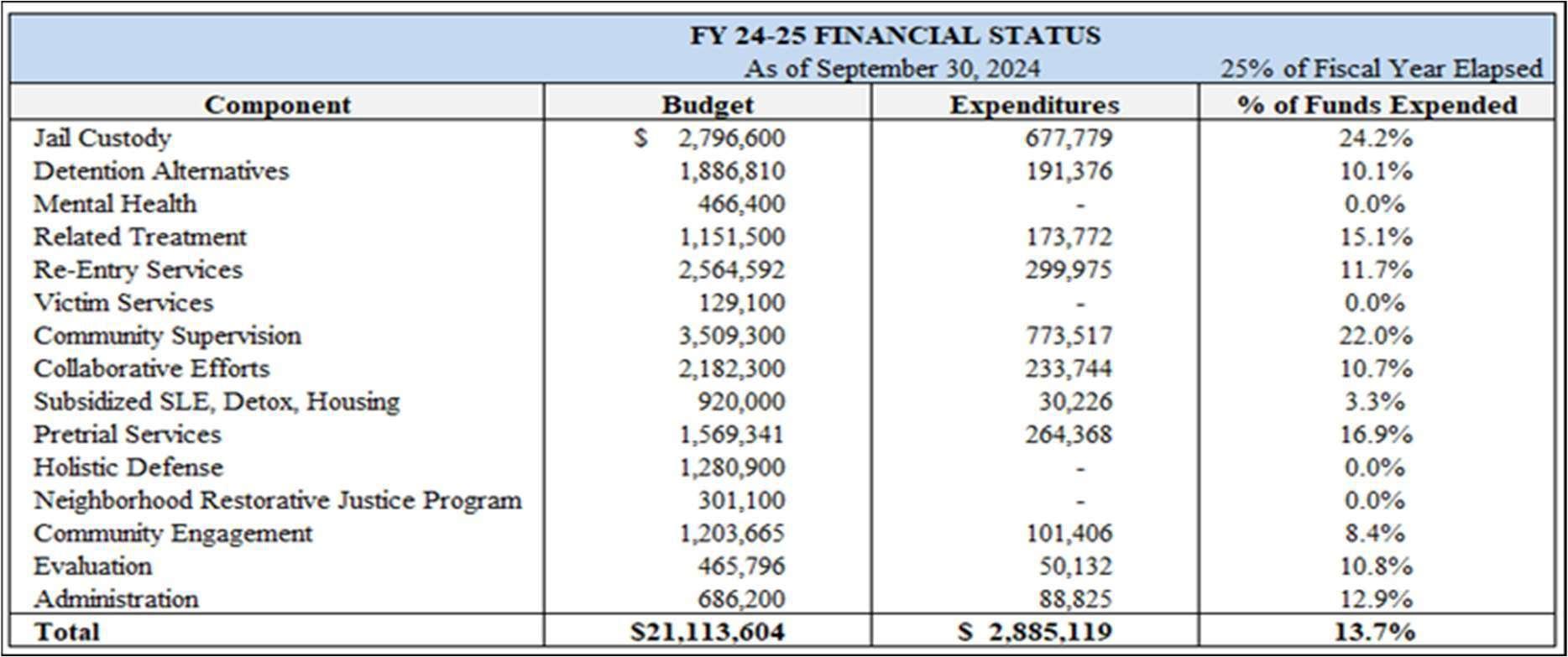



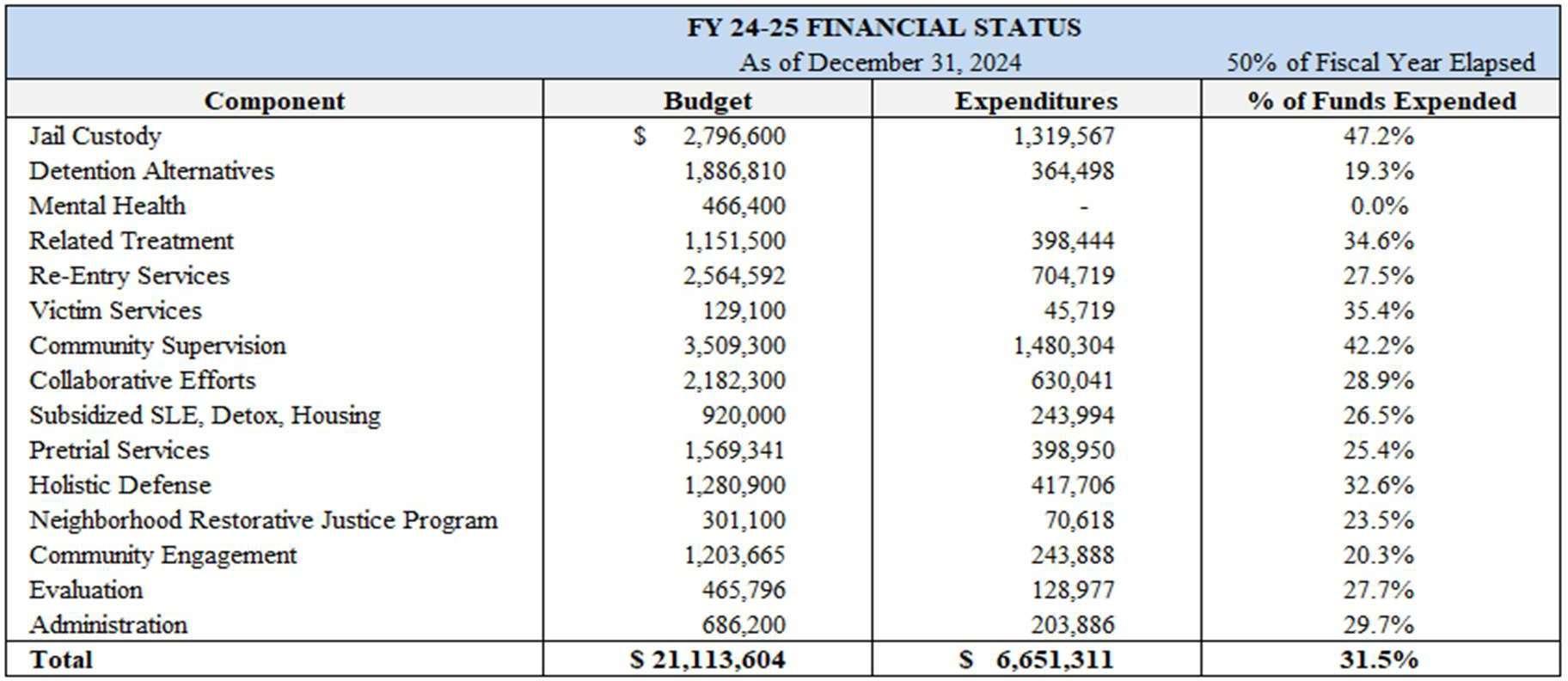

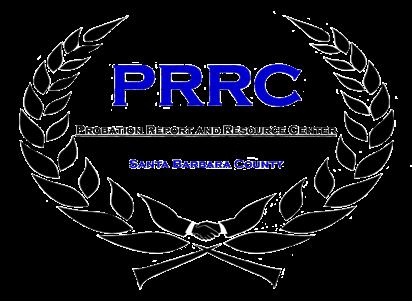
• Moral Reconation Therapy (MRT) is an evidence-based, cognitive behavioral program designed to help individuals make better decisions by promoting higher level moral reasoning
• Recovery Oriented System of Care (ROSC) is a secular, peer-driven support group for clients with substance abuse issues, and is similar to a 12 Step program.
• Reset is designed to support clients who experience a drug or alcohol relapse while enrolled in or after successfully completing MRT. It uses the evidence-based Living in Balance curriculum to promote recovery and stability.
• Sanctuary Centers of Santa Barbara* provides enhanced outpatient treatment and related recovery and reentry services for clients with dual diagnoses. This includes both group and individual therapy sessions focused on community reintegration. Sessions also address client’s criminogenic risks for re-offense and their clinical treatment needs related to their dual diagnoses.
• Seeking Safety is an evidence-based cognitive behavioral intervention for clients with a history of trauma and/or substance abuse.
• Reasoning and Rehabilitation (R&R) is an evidence-based cognitive behavioral program designed to improve problem-solving, decision making and self -control.
• Coping with Anger a cognitive-behavioral program designed to help clients recognize, overcome, and control anger.
• Courage to Change is a cognitive-behavioral Interactive Journaling® system that guides adults through a process of written self-reflection to address their individual growth areas based on a criminogenic risk and needs assessment.
• Work and Gain Economic $elf $ufficiency (WAGE$$) assists unemployed or under-employed clients build job readiness. Participants develop job-seeking skills and interview techniques, including guidance on navigating questions about criminal conviction(s) during the hiring process. Clients develop interview skills, learn how to dress professionally for job interviews, and explore effective job search strategies. Each participant completes a resume.
• ServSafe Food Handlers Certification: All food handlers in California must have a Food Handlers Certification Card to pursue employment in the food service and hospitality industry Participants who successfully complete the training will receive their Food Handlers Certification card.
• Drop-in Employment: Clients access computers for online job searches, review posted classifieds and receive support with completing and submitting job applications and resumes. Assistance is also available for filling out forms such as SSI applications, California driver’s license, and ID forms.


• AmeriCorps: Clients at-risk or experiencing homelessness receive assessments and support to overcome housing barriers. Assistance may include advocacy, referrals to income-based resources such as the Department of Social Services or the Social Security Administration, help with housing applications, and various deposit and rental assistance programs. Additional support includes referrals for education and skill training, free eye exams and glasses, and legal navigation for conviction dismissals, felony reductions or early probation termination.
• Drop-in Education: Clients receive information on obtaining their GED at Allan Hancock College or Santa Barbara City College. One-on-one tutoring is also available for those who need extra help with course work, reading and writing skills, computer skills, and more. Certified teaching staff assess each client and assign a tutor assigned based on individual client needs.
• Stop: Skills, Techniques, Options and Plans for a Better Relationship integrates cognitive behavioral skills to provide clients with practical skills, techniques, and strategies to build heathier relationships, manage conflict, enhance emotional awareness, improve communication and develop constructive behavioral patterns.

This curriculum uses a cognitive behavioral approach to help participants better manage their anger and reduce aggressive behavior. ART is divided into three main components, which are the following: Social Skills Training (behavioral component), Anger Control Training ( affective component), and Moral Reasoning (cognitive component). Participants practice strategies to change anti-social attitudes and behaviors, reduce anti-social peer associations, increase self-control, and develop problem solving skills in healthy ways.
CBI-EMP is designed for individuals who have difficulties obtaining and maintaining employment. This intervention relies on a cognitive behavioral approach to teach participants strategies for identifying and managing high risk situations at work, focusing specifically on how thoughts, attitudes, values, and beliefs drive behavior. Participants will engage in many skill building activities, such as role play, as a part of the therapeutic process and will spend a significant amount of time in the group learning and practicing new methods of handling risky situations that might occur while at work. CBI-EMP is divided into three components which includes identifying and restructuring risky thinking, learning new skills/behaviors, and problem solving to increase success and goal achievement in the workplace.
T4C uses a cognitive behavioral approach to assist participants in changing criminogenic thinking patterns. Thinking for a Change is formulated of three components, which are: cognitive self-change, social skills, and problem-solving skills. The cognitive self-change component teaches individuals a concrete process for self-reflection aimed at uncovering antisocial thoughts, feelings, attitudes, and beliefs. The social skills instruction prepares group members to engage in pro-social interactions based on self-understanding and consideration of the impact of their actions on others. The problem-solving skills component integrates the two previous interventions to provide group members with a detailed step-by-step process for addressing challenging and stressful situations.
MRT is a cognitive-behavioral treatment strategy designed to enhance self-image, promote growth of a positive, productive identity, and to facilitate the development of higher stages of moral reasoning. The term moral reconation was chosen for this curriculum because first, before the term "ego" came into psychology in the 1930s, the term "conation" was used.
The R&R program is a multifaceted, cognitive-behavioral program designed to teach cognitive skills and values essential for prosocial competence. The program enables participants to increase impulsecontrol, meta-cognition, critical thinking, and social/interpersonal skills.
Created in partnership with the Minnesota Department of Corrections, A New Direction Alcohol and Other Drug Education is a flexible, evidence-based, cognitive-behavioral therapy (CBT) curriculum that treats addiction in justice-involved clients and is proven to reduce recidivism. Justice-involved clients learn that substance use disorder is a chronic disease and recognize the negative effects addiction has on the body and all aspects of life. Clients learn they can choose to change and live freely in recovery. This workbook includes Quick Review exercises to reinforce lessons, reflection exercises that bridge content with real-life experience, and Thinking Reports to ensure treatment methods are part of ongoing aftercare.
The Courage to Change Interactive Journaling® System is an evidence-based supervision/case management model developed in collaboration with several United States Probation Offices. Through the use of this cognitive behavioral Interactive Journaling® System and interaction with their support team, participants address their individual problem areas based on a criminogenic risk and needs assessment. Implementation is flexible and can be customized based on risk, responsivity, and programming needs. By personalizing the information presented in the Journals to their own circumstances, participants will develop a record of their commitments and progress throughout probation and a roadmap to success in their efforts to make positive behavior change. Journal topics include Getting Started, Social Values, Responsible Thinking, Self-Control, Peer Relationships, Family Ties, Substance Use, Seeking Employment and Recreation & Leisure.
This curriculum introduces participants to the Adverse Childhood Experiences (ACE) Study conducted by the Centers for Disease Control and Kaiser Permanente to better understand the effects of childhood trauma and stress, and how ACEs also effect behavior and society at large. A core goal of the Building Healthy Life Skills curriculum is to begin to understand the connection between stress and physical and emotional illnesses, change emotional reactions into thoughtful responses, and develop self-awareness toward better command of the individual’s self-destructive patterns of thought and behavior.
Helping Women Recover: A Program for Treating Substance Abuse, Stephanie Covington (Revised edition of the Woman’s Journal for use in the Criminal Justice System)
The Helping Women Recover Women’s Journal addresses issues that many women struggle with, especially if they are experiencing alcohol or other drug use disorders. Each woman’s path of healing is unique, but many find that it invariably involves connecting with others in healthy relationships. The course is organized into four modules which map the key ‘triggers’ toward relapse: Self, Relationships, Sexuality, and Spirituality. These are also the areas of greatest change in recovery, and the group focuses self-esteem, family of origin, interpersonal violence, and meditation/relaxation techniques.
A flexible, evidence-based program proven to significantly reduce recidivism for justice-involved clients. Developed in partnership with the Minnesota Department of Corrections, the curriculum utilizes cognitive-behavioral therapy to help clients change criminal and addictive behavior patterns by engaging in the following workbook modules:
o Criminal and Addictive Thinking
o Socialization
o Preparing for Release







